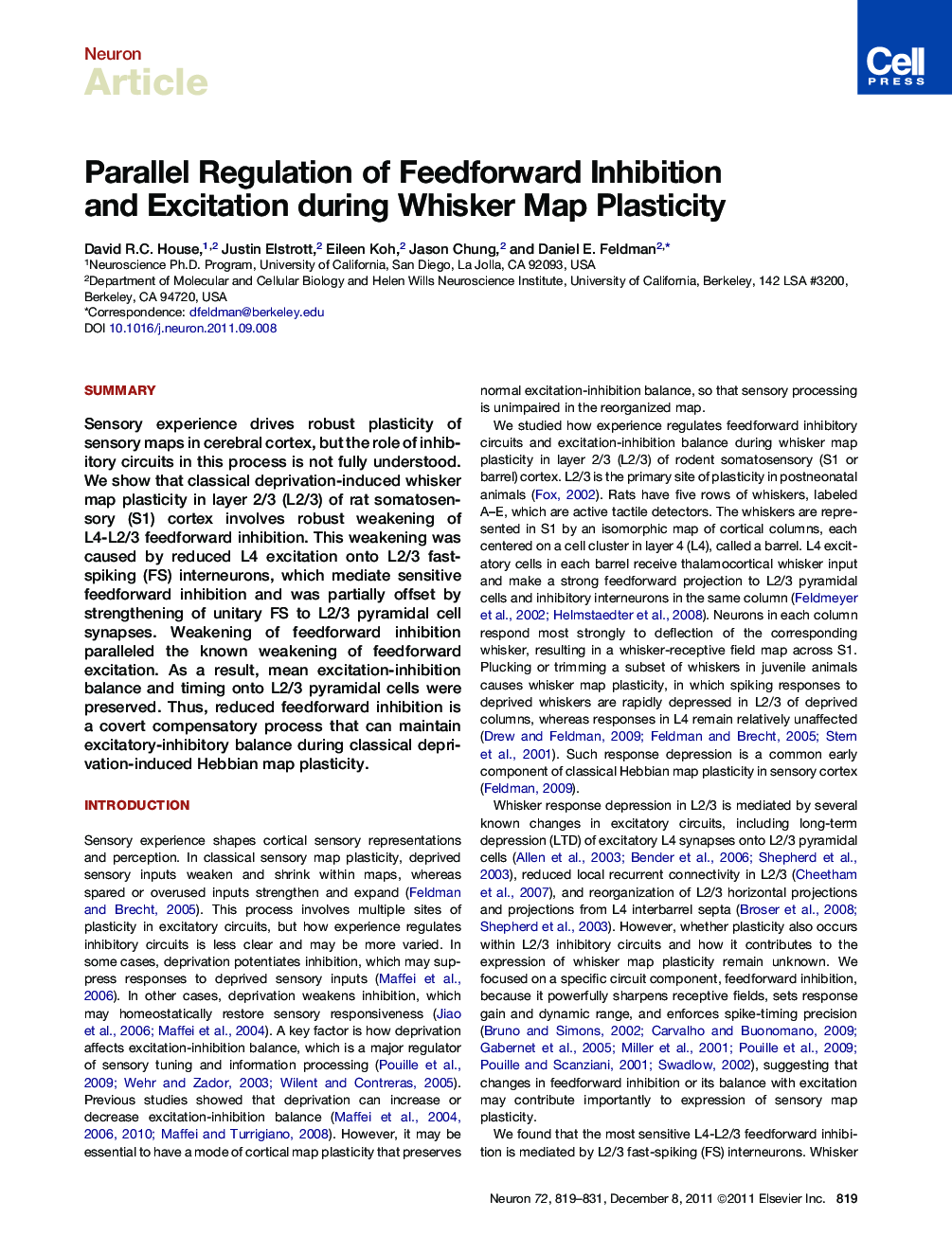| Article ID | Journal | Published Year | Pages | File Type |
|---|---|---|---|---|
| 4321436 | Neuron | 2011 | 13 Pages |
SummarySensory experience drives robust plasticity of sensory maps in cerebral cortex, but the role of inhibitory circuits in this process is not fully understood. We show that classical deprivation-induced whisker map plasticity in layer 2/3 (L2/3) of rat somatosensory (S1) cortex involves robust weakening of L4-L2/3 feedforward inhibition. This weakening was caused by reduced L4 excitation onto L2/3 fast-spiking (FS) interneurons, which mediate sensitive feedforward inhibition and was partially offset by strengthening of unitary FS to L2/3 pyramidal cell synapses. Weakening of feedforward inhibition paralleled the known weakening of feedforward excitation. As a result, mean excitation-inhibition balance and timing onto L2/3 pyramidal cells were preserved. Thus, reduced feedforward inhibition is a covert compensatory process that can maintain excitatory-inhibitory balance during classical deprivation-induced Hebbian map plasticity.
► Whisker deprivation reduces feedforward inhibition during whisker map plasticity ► Feedforward inhibition is reduced in parallel with feedforward excitation ► Reduced inhibition maintains excitation-inhibition balance during plasticity ► Multiple sites of plasticity exist within fast-spiking interneuron circuits
